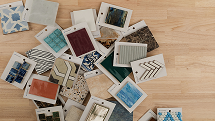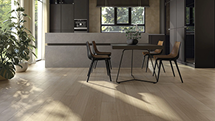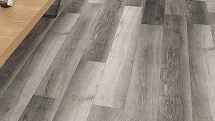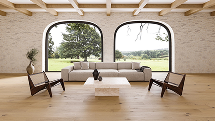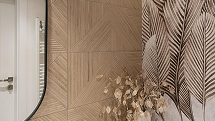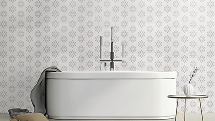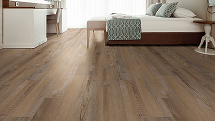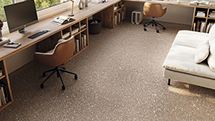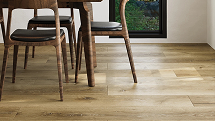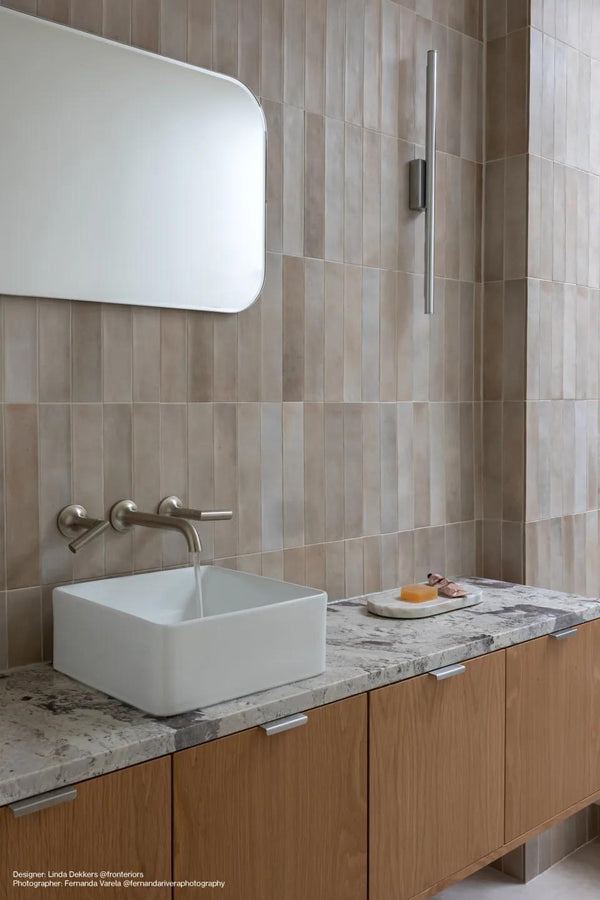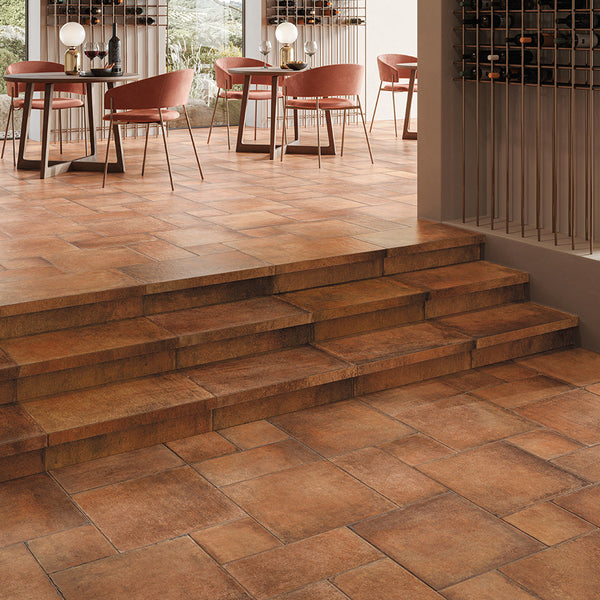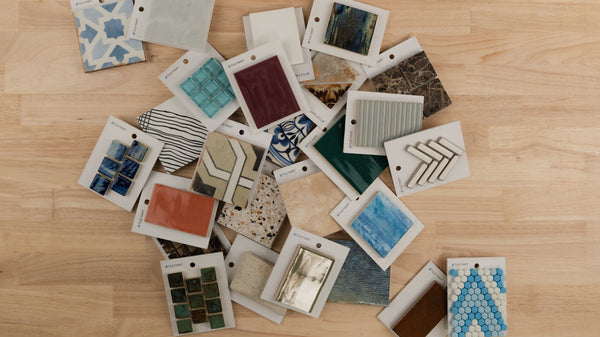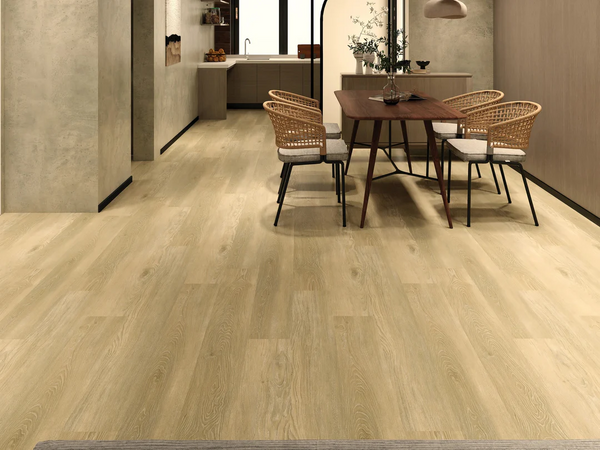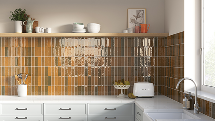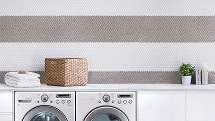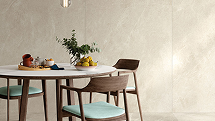10 Creative Ways to Incorporate Geometric Tiles

Key Highlights
- Geometric tiles are a popular choice in interior design due to their aesthetic appeal and ability to create a bold statement.
- They can transform any space into a stylish and modern haven, adding a contemporary look to your interior design.
- Geometric tiles come in a variety of shapes and patterns, allowing for endless creative possibilities in incorporating them into your design.
- From creating dynamic entrances to transforming accent walls, there are numerous inventive ways to utilize geometric tiles in your interior design.
- They can be used in various rooms, such as kitchens, bathrooms, bedrooms, and even outdoor spaces, adding visual interest and a touch of elegance to each space.
- When designing with geometric tiles, it's important to consider key factors such as color scheme, tile size, pattern play, and grout color to achieve a cohesive and visually appealing look.
Introduction
Geometric tiles have become increasingly popular in interior design in recent years. Their unique patterns and shapes add a touch of flair and visual interest to any space. Whether you’re looking to create a bold statement or add subtle accents, geometric tiles can transform your home into a stylish and modern haven. The appeal of geometric tiles lies in their ability to create a focal point in a room, making them perfect for accent walls or feature areas. Walking into a room adorned with geometric tiles instantly captivates the eyes with mesmerizing patterns that dance across the walls or floors. The precision and symmetry of the designs create a harmonious atmosphere, evoking a sense of tranquility and sophistication.
Geometric tiles come in a wide range of styles, from simple geometric shapes to complex patterns. This versatility allows you to choose a design that suits your personal taste and complements your existing decor. Whether you prefer a minimalist look, a retro vibe, or a contemporary style, there's a geometric tile pattern that's perfect for you. They can be used on walls, floors, backsplashes, and even ceilings, allowing you to create a cohesive look throughout your space.
10 Inventive Methods to Utilize Geometric Tiles in Your Design
Creating a dynamic entrance with bold geometric patterns can set the stage for a striking first impression. Accent walls using geometric tiles can transform spaces instantly, adding visual interest and a focal point. Geometric tile backsplashes offer a modern look to kitchens, while bathroom elegance can be achieved with geometric tiles in shower areas. Combining various geometric tiles for floor designs allows for a unique and contemporary aesthetic. Outdoor spaces can be revamped using durable geometric tiles, extending the design impact beyond indoor spaces.
1. Creating a Dynamic Entrance with Bold Geometric Patterns
Creating a dynamic entrance with bold geometric patterns is a great way to make a statement and set the tone for your interior design. Consider using geometric tiles on the floor or walls of your entryway to create a visually captivating and welcoming space. Opt for bold patterns such as chevron or herringbone to add a sense of movement and visual interest. The geometric shapes will instantly catch the eye and create a focal point as soon as you step into the room. Pair the bold geometric tiles with minimalistic furniture and decor to create a balanced and modern look.
2. Accent Walls that Transform Spaces with Geometric Tiles
Transforming a space with an accent wall featuring geometric tiles is a popular design choice for adding visual interest and creating a focal point. Here are some creative ways to incorporate geometric tiles into accent walls:
- Choose a bold geometric pattern, such as hexagon or Moroccan-inspired motifs, to make a statement.
- Opt for contrasting colors to create depth and add visual appeal.
- Create a geometric tile mural on the accent wall for a unique and artistic expression.
- Use geometric tiles to create a feature wall around a fireplace or TV area.
- Combine different geometric tile patterns for a visually captivating and eclectic look.
3. Geometric Tile Backsplashes for a Modern Kitchen Look
Adding a geometric tile backsplash is a great way to give your kitchen a modern twist. The geometric pattern adds visual interest and creates a contemporary look. Consider these ideas for incorporating geometric tile backsplashes in your kitchen design:
- Use subway tiles with a geometric pattern to create a classic yet modern look.
- Opt for a herringbone or chevron pattern for a dynamic and eye-catching backsplash.
- Combine different geometric shapes, such as hexagons or triangles, for a unique and playful design.
- Choose neutral colors for a minimalistic and clean aesthetic, or go bold with vibrant colors for a more daring and vibrant look.
- Extend the geometric tile backsplash from the countertop to the ceiling for a seamless and cohesive design.
4. Bathroom Elegance: Geometric Tiles in Shower Areas
Incorporating geometric tiles in shower areas adds a touch of elegance and sophistication to your bathroom design. Here are some ways to incorporate geometric tiles in your shower areas:
- Create a geometric tile accent wall in the shower area for a dramatic and visually striking effect.
- Use mosaic geometric tiles to create intricate patterns and designs.
- Opt for geometric tiles in neutral colors for a clean and modern look.
- Combine different shapes and sizes of geometric tiles for added visual interest.
- Extend the geometric tile design from the shower area to the bathroom floor for a cohesive and harmonious look.
5. Combining Geometric Tiles for a Unique Floor Design
Combining different geometric tiles can create a unique and visually captivating floor design. Here are some ideas for creating a unique floor design using geometric tiles:
- Mix and match different geometric tile patterns to create a visually dynamic and eclectic look.
- Use geometric tiles in different sizes to create a sense of movement and depth.
- Combine geometric tiles in contrasting colors for added visual interest.
- Create a geometric tile carpet look by using geometric tiles in a specific area of the floor.
- Play with the orientation and placement of the geometric tiles to create a one-of-a-kind design.
6. Outdoor Spaces Revamped with Durable Geometric Tiles
Revamp your outdoor spaces with durable geometric tiles to create a stylish and visually captivating outdoor area. Here are some ideas for using geometric tiles in outdoor spaces:
- Use geometric tiles to create a patio or deck area for a modern and contemporary look.
- Opt for slip-resistant geometric tiles for safety in outdoor areas.
- Choose durable materials such as porcelain or natural stone for long-lasting outdoor use.
- Create geometric tile pathways or stepping stones for a unique and artistic touch.
- Extend the geometric tile design from the outdoor area to the interior for a seamless and cohesive look.
7. Geometric Tiles as Fireplace Surrounds for a Cozy Ambiance
Using geometric tiles as fireplace surrounds can create a cozy ambiance and add a touch of visual interest to your living space. Here are some ways to incorporate geometric tiles around your fireplace:
- Create a geometric tile mosaic as the backdrop for your fireplace to make it a focal point of the room.
- Use geometric tiles with warm and earthy tones for a cozy and inviting atmosphere.
- Opt for a herringbone or chevron pattern for a contemporary and stylish fireplace surround.
- Combine geometric tiles with other materials such as wood or metal for a modern and unique look.
- Extend the geometric tile design from the fireplace surround to the adjacent walls for a cohesive and harmonious design.
8. Custom Geometric Tile Murals for Artistic Expression
Custom geometric tile murals offer a unique and artistic way to express yourself in your interior design. Here are some ideas for incorporating custom geometric tile murals:
- Collaborate with an artist or designer to create a one-of-a-kind geometric tile mural that reflects your personal style and artistic expression.
- Use geometric tile murals as a focal point in living rooms, bedrooms, or dining areas.
- Create a custom geometric tile mural as a backdrop for a home office or creative space.
- Use geometric tile murals to add a pop of color and visual interest to a neutral or minimalist design.
- Extend the geometric tile mural from the floor to the walls for a cohesive and immersive art installation.
9. Enhancing Bedroom Floors with Soft-Hued Geometric Tiles
Enhance the floors of your bedroom with soft-hued geometric tiles for a serene and tranquil atmosphere. Here are some ideas for incorporating soft-hued geometric tiles in your bedroom design:
- Choose geometric tiles in pastel or muted colors for a soft and calming look.
- Opt for geometric tiles with subtle patterns or textures to add depth and visual interest to your bedroom floors.
- Create a geometric tile rug design in the center of your bedroom for a unique and playful look.
- Extend the geometric tile design from the bedroom floors to the walls or other areas for a cohesive and harmonious design.
- Pair the soft-hued geometric tiles with light and airy decor to create a relaxing and inviting bedroom space.
10. Implementing Geometric Tiles in Commercial Spaces for Brand Identity
Implementing geometric tiles in commercial spaces can create a visually captivating and branded environment. Here are some ideas for incorporating geometric tiles in commercial spaces:
- Use geometric tiles in the company's brand colors to create a cohesive and branded design.
- Create geometric tile patterns or murals that reflect the company's logo or mission statement.
- Use geometric tiles in high-traffic areas to create a visually engaging and durable flooring option.
- Combine different geometric tile patterns and colors to create a unique and eclectic design that reflects the company's identity.
- Extend the geometric tile design from the floors to other areas such as walls or ceilings for a cohesive and immersive brand experience.
Designing with Geometric Tiles: Key Considerations
When designing with geometric tiles, there are several key considerations to keep in mind to achieve a cohesive and visually appealing look. These considerations include choosing the right color scheme for harmony and contrast, selecting the appropriate tile size for your space, exploring pattern play by mixing and matching different geometric tiles, and considering the importance of grout color in achieving a cohesive and seamless look.
Choosing the Right Color Scheme for Harmony and Contrast
The choice of color scheme is crucial when incorporating geometric tiles into your design. Here are some tips for choosing the right color scheme for harmony and contrast:
- Consider the overall color palette of your space and choose geometric tiles that complement or contrast with the existing colors.
- Use complementary colors to create harmony and unity in your design.
- Experiment with contrasting colors to create a bold and eye-catching look.
- Consider the mood and atmosphere you want to create in the space and choose colors that evoke the desired emotions.
- Use neutral colors as a base and add pops of color with geometric tiles for visual interest and contrast.
Size Matters: Selecting the Appropriate Tile Size for Your Space
When selecting geometric tiles, it's important to consider the size of your space. Here are some tips for selecting the appropriate tile size for your space:
- In smaller spaces, opt for larger tiles to create the illusion of a more spacious area.
- In larger spaces, smaller tiles can create a cozier and more intimate atmosphere.
- Consider the scale and proportion of the room and choose tile sizes that are proportionate to the space.
- Experiment with different tile sizes to create visual interest and variety in your design.
- Balance the tile size with other design elements in the space, such as furniture and decor, for a cohesive and harmonious look.
Pattern Play: Mixing and Matching Geometric Tiles
Pattern play is a fun and creative technique to incorporate into your design when using geometric tiles. Here are some tips for mixing and matching different geometric tiles:
- Experiment with different geometric tile patterns to create visual interest and variety in your design.
- Combine geometric tiles in complementary colors to create a harmonious and balanced look.
- Use contrasting patterns to create a bold and eye-catching design.
- Create a focal point by using a larger or more intricate pattern as the centerpiece and surrounding it with simpler patterns.
- Consider the scale and proportion of the patterns and choose sizes that are proportionate to the space.
The Importance of Grout Color in Geometric Tile Designs
The grout color plays a significant role in achieving a cohesive and seamless look in your geometric tile designs. Here are some tips for choosing the right grout color:
- Choose a grout color that complements the color of the tiles to create a cohesive and harmonious look.
- Use a grout color that contrasts with the tile color to create a bold and defined pattern.
- Consider the desired effect you want to achieve and how the grout color will enhance or detract from the overall design.
- Experiment with different grout colors to find the one that best suits your design vision.
- Regularly clean and maintain the grout to ensure it retains its color and appearance over time.
Installation Tips for Geometric Tiles
Proper installation is crucial to ensure the longevity and durability of your geometric tiles. Here are some installation tips to keep in mind:
Preparing Your Surface for Geometric Tile Installation
Proper preparation of the surface is essential before installing geometric tiles. Here are some installation tips for preparing your surface:
- Ensure that the surface is clean, dry, and level before starting the installation process.
- Remove any existing flooring or debris from the area to create a smooth and even surface.
- Apply a primer or sealer to the surface to improve adhesion and prevent moisture buildup.
- Use a leveling compound to correct any uneven areas and create a flat and stable surface.
- Follow the manufacturer's instructions and guidelines for adhesive application and tile placement to ensure proper installation.
Essential Tools for a Successful Geometric Tile Project
Having the right tools is essential for a successful geometric tile installation project. Here are some essential tools you'll need:
- Tile cutter or wet saw for cutting and shaping the tiles to fit your design.
- Trowel for applying adhesive and spreading it evenly on the surface.
- Grout float for applying grout and ensuring smooth and even coverage.
- Level and measuring tools for precise and accurate tile placement.
- Sponge and bucket for cleaning excess grout and maintaining a clean surface.
- Safety equipment such as gloves and goggles to protect yourself during the installation process.
DIY Installation vs. Hiring a Professional: What to Know
When it comes to installing geometric tiles, you have the option to do it yourself or hire a professional. Here are some considerations to keep in mind:
- DIY installation can be cost-effective, but it requires time, patience, and skill.
- Hiring a professional ensures a high-quality and professional installation, but it comes at an additional cost.
- Consider your experience and comfort level with tile installation before deciding to DIY or hire a professional.
- Assess the complexity of the project and the level of precision required to achieve your desired design.
- Research and gather information on the installation process and techniques to make an informed decision.
Maintenance and Sustainability of Geometric Tiles
Proper maintenance and sustainability are important factors to consider when incorporating geometric tiles into your design. Here are some considerations for maintaining and sustaining your geometric tiles.
Easy Cleaning Tips for Keeping Geometric Tiles Sparkling
Keeping your geometric tiles clean and sparkling requires regular maintenance. Here are some easy cleaning tips:
- Sweep or vacuum the tiles regularly to remove dirt and debris.
- Use a mild detergent and warm water to mop the tiles, ensuring you rinse them thoroughly afterwards.
- Avoid using harsh chemicals or abrasive cleaners that can damage the tiles' finish.
- Address spills and stains promptly to prevent them from setting into the tiles.
- Regularly inspect the grout lines and reseal them if necessary to prevent moisture buildup and mold growth.
Eco-Friendly Options for Geometric Tiling
When it comes to sustainability, there are eco-friendly options available for geometric tiling. Here are some eco-friendly options to consider:
- Choose geometric tiles made from recycled materials to reduce waste and promote a circular economy.
- Look for tiles produced using sustainable manufacturing practices to minimize environmental impact.
- Consider natural stone tiles, such as marble or travertine, which are durable and long-lasting.
- Opt for tiles with low VOC (volatile organic compound) emissions to promote indoor air quality.
- Regularly maintain and care for your geometric tiles to extend their lifespan and reduce the need for replacement.
Conclusion
Incorporating geometric tiles into your design offers endless possibilities for creativity and style. From dynamic entrances to cozy fireplaces, these tiles can transform any space with flair. Consider color schemes, tile sizes, and grout colors for a harmonious look. Whether you're tackling the installation yourself or hiring a professional, proper preparation is key. Keep your geometric tiles sparkling with easy cleaning tips and explore eco-friendly options for a sustainable choice. Embrace the versatility of geometric tiles to infuse your spaces with character and charm.
Frequently Asked Questions
Can geometric tiles be used in small spaces without overwhelming the area?
Yes, geometric tiles can be used in small spaces without overwhelming the area. By choosing smaller geometric tiles or less intricate patterns, you can still achieve visual interest and a contemporary style without overpowering the space.
How can I mix different geometric patterns without clashing?
To mix different geometric patterns without clashing, consider using a cohesive color palette and finding a common element, such as shape or color, to tie the patterns together. Experiment with different combinations to find a balance that works for your design.

